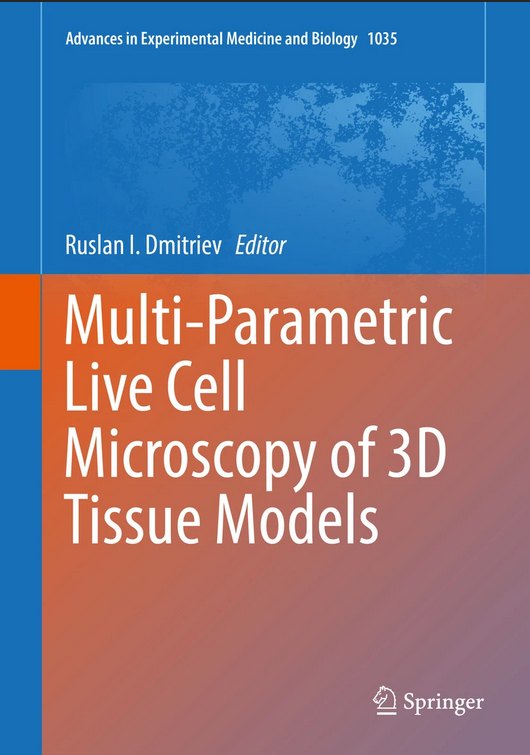
Book Chapter, in: R. I. Dmitriev (Ed.), Multi-Parametric Live Cell Microscopy of 3D Tissue Models
TCSPC FLIM/PLIM is based on a multi-dimensional time-correlated single-photon counting process. The sample is scanned by a high-frequency-pulsed laser beam which is additionally modulated on/off synchronously with the pixels of the scan. FLIM is obtained by building up the distribution of the photons over the scanning coordinates and the times of the photons in the excitation pulse sequence, PLIM is obtained by building up the photon distribution over the scanning coordinates and the photon times in the modulation period. FLIM and PLIM data are thus obtained simultaneously within the same imaging process. Since the technique uses not only one but many excitation pulses for every phosphorescence signal period the sensitivity is much higher than for techniques that excite with a single pulse only. TCSPC FLIM/PLIM works both with one-photon and two-photon excitation, does not require a reduction of the laser pulse repetition rate by a pulse picker, and eliminates the need of high pulse energy for phosphorescence excitation.
